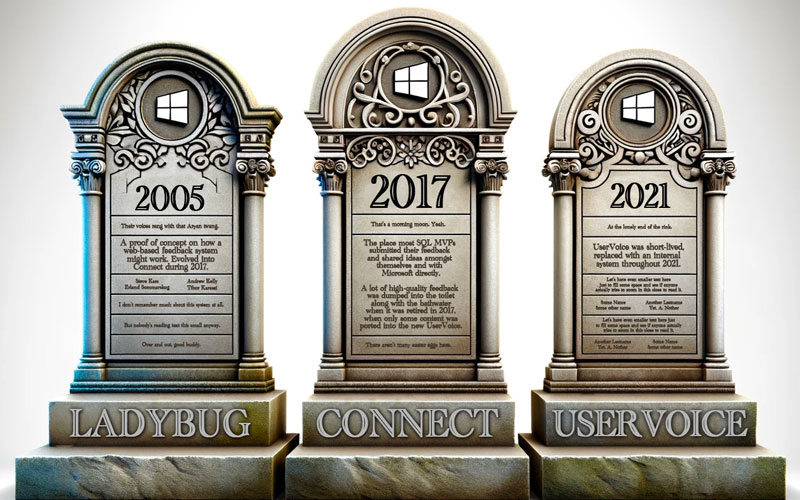In the very early days, there was a feedback system called LadyBug. Many of the items there were moved over to Connect in 2005. In 2017, in the wake (or at least under the guise) of GDPR, they took selective portions of the data and moved it over to UserVoice. In 2021, they retired that, too.
I filed many Connect items over its dozen years in existence (800+ IIRC), and I used to promote those items quite heavily here, in weekly-or-so posts called "Connect digests." If you landed here because you tried to get to information about a feedback item I filed a decade ago, I'm sorry. I've started to phase out old and less relevant content from this site.
I don't know how much of the content made it from Connect to UserVoice or from UserVoice to the new home-grown feedback location, but the current place to submit feedback to Microsoft, at least about SQL Server, is:


